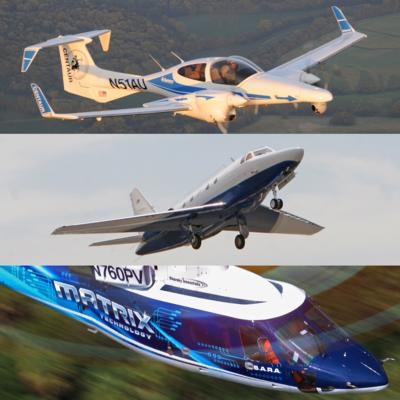Thu, Mar 12, 2015
Phase 1 Research Includes Planned Ground And Flight Demonstrations To Help Mature Capabilities Faster
In the latest step in a decades-long process through which automation has taken on increasing responsibilities in the cockpit—allowing pilots to focus on flight tasks demanding their unique capabilities—DARPA has awarded three contracts for its Aircrew Labor In-Cockpit Automation System (ALIAS) program.

ALIAS envisions a tailorable, drop-in, removable kit that would enable high levels of automation in existing aircraft and facilitate reduced need for onboard crew. The program intends to leverage the considerable advances that have been made in aircraft automation systems over the past 50 years, as well as the advances that have been made in remotely piloted aircraft technologies, to help shift and refocus pilot workloads, augment mission performance and improve aircraft safety.
DARPA has awarded prime contracts for ALIAS to the following companies:
- Aurora Flight Sciences Corporation
- Lockheed Martin Corporation
- Sikorsky Aircraft Corporation
These performers are working with DARPA’s technical team, which includes experts from the National Aeronautics and Space Administration (NASA), the U.S. Air Force, the U.S. Army and the U.S. Navy.
In Phase 1 of ALIAS, DARPA intends to focus on three critical technology areas:
- Development of minimally invasive interfaces between new automation systems and existing aircraft
- Knowledge acquisition on aircraft operations, to support rapid adaptation of the ALIAS toolkit across different aircraft
- Human-machine interfaces that would enable high-level human supervision instead of requiring pilots’ constant vigilance over lower-level flight maintenance tasks
“Because we want to develop a drop-in system for existing aircraft, we chose performers who could conduct actual ground and flight demonstrations at the start of the program instead of at the end,” said Dan Patt, DARPA program manager. “We’re excited to have a lot of Phase 1 hardware ready to test, which we hope will steepen our learning curve and mature the capability faster. We will also be working closely with members of the crew-operations community, and will be integrating their feedback to help ensure that the move towards greater automation takes best advantage of machine and human skill sets.”
(Image provided by DARPA)
More News
Also: Horizon Picks P&W PT6A, Army Buys 3 EagleNXT, First Hybrid-Electric Regional, Army Selects AEVEX Anduril Industries’ YFQ-44A Collaborative Combat Aircraft was flown>[...]
While Flying North Along The Beach At About 300 Ft Above Ground Level, The Pilot Reported That The Engine RPM Dropped To About Idle On September 28, 2025, at 1126 eastern daylight >[...]
Aero Linx: European Association of Aviation Training and Educational Organisations (EATEO) Welcome to the “ European Association of Aviation Training and Education Organizati>[...]
On-Course Indication An indication on an instrument, which provides the pilot a visual means of determining that the aircraft is located on the centerline of a given navigational t>[...]
“It also gives us the hard data we need to shape requirements, reduce risk, and ensure the CCA program delivers combat capability on a pace and scale that keeps us ahead of t>[...]
 Airborne-NextGen 11.04.25: Anduril YFQ-44A, Merlin SOI 2, UAV Rulemaking Stalled
Airborne-NextGen 11.04.25: Anduril YFQ-44A, Merlin SOI 2, UAV Rulemaking Stalled NTSB Prelim: Elmore Travis C Searey
NTSB Prelim: Elmore Travis C Searey ANN's Daily Aero-Linx (11.03.25)
ANN's Daily Aero-Linx (11.03.25) ANN's Daily Aero-Term (11.03.25): On-Course Indication
ANN's Daily Aero-Term (11.03.25): On-Course Indication Aero-News: Quote of the Day (11.03.25)
Aero-News: Quote of the Day (11.03.25)



